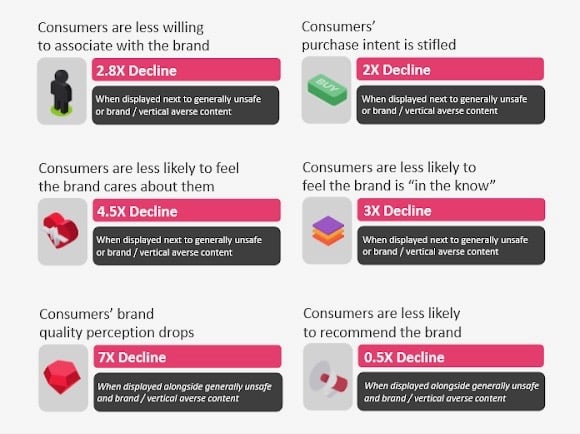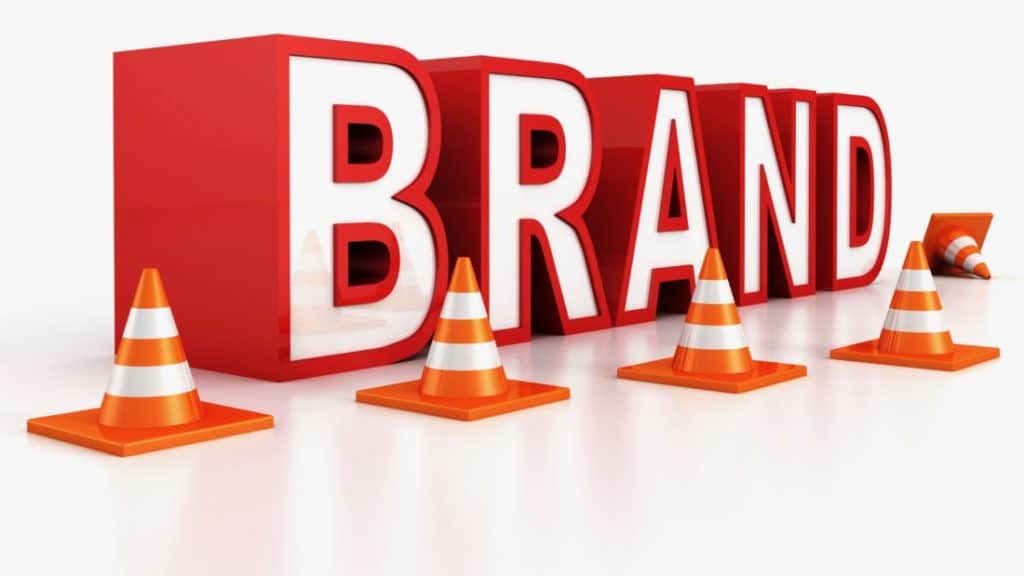Digital marketers have worried about placing ads next to unsafe content for quite some time now. In fact, brand safety has exploded over the past couple of years and has become a top priority for media buyers.
However, it seems the technology available to advertisers (either in house or through third-party verification vendors) was more capable of reporting on brand safety incidents after they had already occurred, than actually preventing them in the first place.
The big question is: What’s the damage to the brand?
Many advertisers have put enormous efforts into solving these issues, only to end up (reluctantly) accepting a grim reality in which their ads serve repeatedly alongside violent, offensive and graphic content. Some advertisers (and what I believe to be a small minority) have even displayed complacency towards this issue.
A recent example: I was meeting with a C-suite executive of one of the world’s leading brands, who had seen his company exposed alongside some really nasty content. His reaction, to my surprise, was to ask me if I “thought that this really has a negative impact, or are we just being hysterical.”
For one of the only times in my career, I was stuck for words. I had suddenly realized that the damage of negative ad placement was never properly quantified and that this guy was actually making a legitimate point, albeit a counter-intuitive one.
Tallying the damage
The attempt to quantify the damage produced some astonishing results. It is what led us at CHEQ to join with IPG Media Lab, Magna Global and BMW to conduct “The Brand Safety Effect”, the most comprehensive study of consumer perceptions and how they are affected by negative ad placement.
Over 2,000 consumer reactions to video pre-roll ads were examined in the study. The participants were divided into control groups and test groups. Some viewed the ads alongside safe content and others alongside three types of unsafe content: generally unsafe content (i.e., a school shooting); brand-averse content (i.e., an airline ad next to an article about an airline forcibly removing a passenger); vertical-averse content (i.e., a soda ad in front of content about diabetes).
The findings were quite astonishing. And the damage was beyond what we’d initially imagined.
Perhaps the most surprising finding was that consumers viewed non-brand safe ads as an intentional endorsement by the brand. So, for example, if a brand is advertising alongside an article with racist undertones, the consumer assumes the brand deliberately chose to appear there and is in fact endorsing that piece of content.
A pre-emptive brand safety approach
In a world where brands are loved or hated for the values they represent, no advertiser can afford to align their brand with negative content, especially now that we know the consumer thinks this is being done deliberately. A single misplaced ad is no longer just a PR hazard, but a threat to the brand’s entire reputation.
Here are a few data points from the research which highlight the above statement: First and foremost, the consumers’ willingness to associate with the brands who were placed alongside negative content dropped 280%.
Brands are all about belonging, and if consumers won’t associate themselves with the brand, then that’s game over for those customer relationships. This also explains why the study showed a 200% drop in purchase intent among those consumers who viewed the negatively placed ads. So even looking at this issue from a calculated, monetary perspective, brands should be alarmed by the potential loss of revenue.
We also found consumers were 50% less likely to recommend the brand after the negative exposure, yet another blow to the brand’s strength and image. Consumers were also 450% more likely to feel the brand doesn’t care about them, 300% more likely to feel the brand isn’t “in the know” and finally, the brand’s quality perception dropped 700% percent.

The study gave us a fascinating look into the consumer’s world and showed us how severely they judge brands that advertise alongside negative content. This means the only course of action to which brands should subscribe is a proactive and pre-emptive one.
Brand safety measurement and after-the-fact reporting means ads continue to be served in these environments, and they continue to pay the price. This is a problem which ought not just be measured, but prevented from the get-go, and anything short of that will leave advertisers exposed to the “Brand Safety Effect.”





Join the conversation